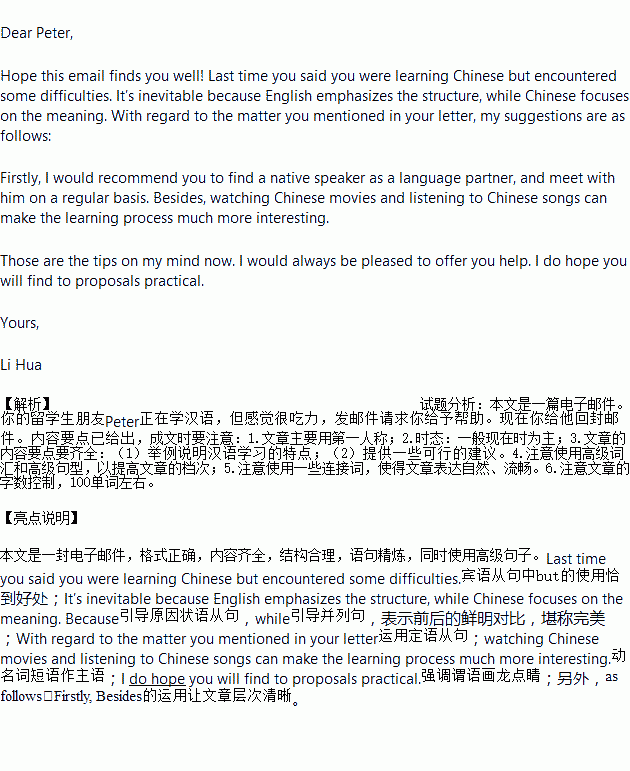题目内容
假定你是李华,你的留学生朋友Peter发邮件说,他正在学汉语,但感觉很吃力,请求你给予帮助。请给他回封邮件,内容包括:
1.举例说明汉语学习的特点;
2.提供一些可行的建议。
注意:1.词数100左右;
2.可适当增加细节,以使行文连贯。
_____________________________________________________________________________________________
_________________________________________________________________________________________________________________________________________________________________________
练习册系列答案
相关题目


 dling away time 8. ( hurt ) him deeply, while if I have done something great and meaningful, such as 9. ( write ) a book, he will be more excited than me. I always remind 10. ( me ) I must go on and on, and never shall I give up halfway.
dling away time 8. ( hurt ) him deeply, while if I have done something great and meaningful, such as 9. ( write ) a book, he will be more excited than me. I always remind 10. ( me ) I must go on and on, and never shall I give up halfway.